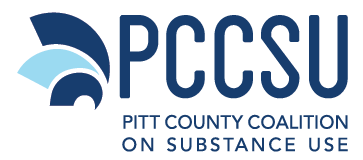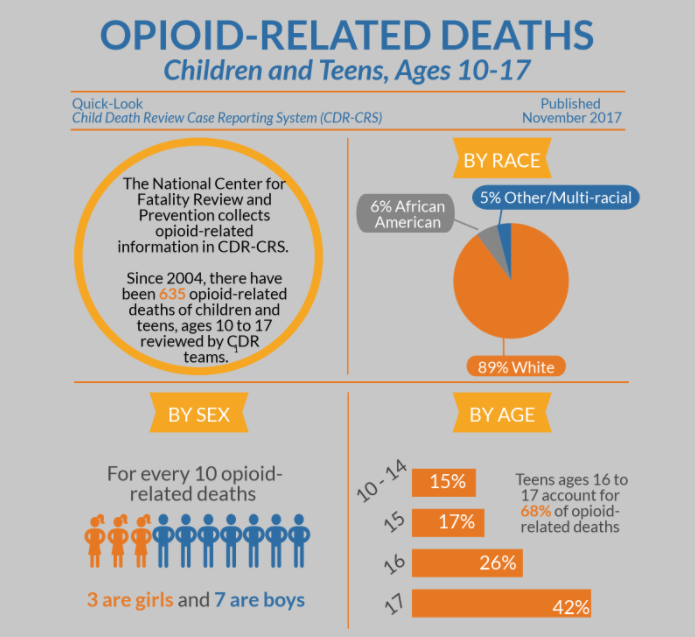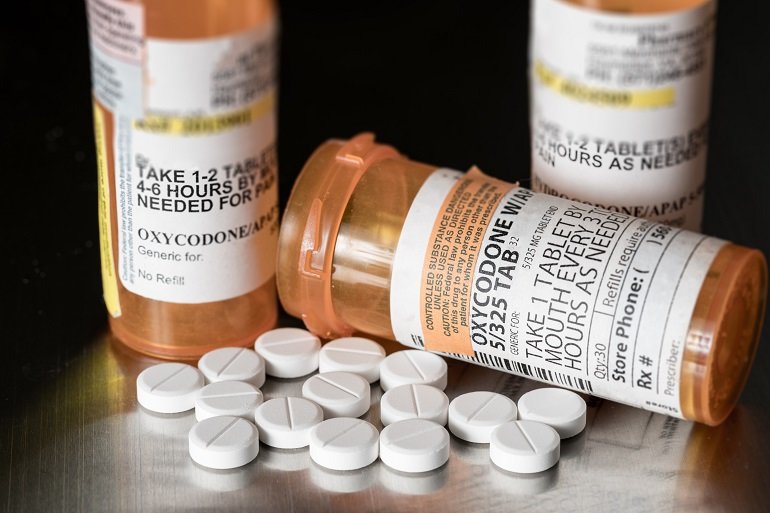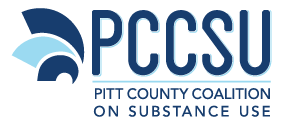Opioids
What Are Opioids?
Opioids are a class of drugs that include the illegal drug heroin, synthetic opioids such as fentanyl, and pain relievers available legally by prescription, such as oxycodone (OxyContin®), hydrocodone (Vicodin®), codeine, morphine, and many others (DrugAbuse.Gov).
Why is this a problem?
Drug overdose deaths and opioid-involved deaths continue to increase in the United States. The majority of drug overdose deaths (more than six out of ten) involve an opioid. Since 1999, the number of overdose deaths involving opioids (including prescription opioids and heroin) have quadrupled. Overdoses involving opioids killed more than 42,000 people in 2016. 40% of those deaths were from prescription opioids (CDC.GOV).
National
In the U.S, 3,900 people initiate non-medical use of prescription opioids on an average day. 78 people die each day from an opioid-related overdose (CDC.GOV).
North Carolina
More than 11,000 hospitalizations in 2013 and nearly 22,000 ED visits in 2014 related to medication or drug poisoning. Four people die each day from an opioid overdose in North Carolina. Heroin-related deaths have tripled from 79 deaths in 2011 to 253 deaths in 2014 (NCDHHS.GOV).
For county level opioid poisoning data click here.
Pitt County
In Pitt County alone from 2004-2014, there have been 352 opiate related hospitalizations, 269 RX opiate hospitalizations, and 27 heroin related hospitalizations (NCDHHS.GOV).
Did You Know?
- There are 144 drug overdose deaths per day in the United States. Sixty-three percent of those deaths are related to pharmaceutical opioids or heroin.
- Nearly one in five teens say they have used prescription medicine at least once in their lifetime to get high.
- In 2015, 58 percent of 12th grade students reported a “great risk” in trying heroin.
Opioids and Youth
As the opioid epidemic spreads across the country, the number of opioid-related overdoses among teens continues to rise. According to the Center for Disease Control and Prevention (CDC), the number of deadly overdoses has more than doubled in the last decade. Experts say this is due to the availability of opioids ⎼ prescription painkillers, heroin, and fentanyl. But teens are not just taking more opioids than before, they are also mixing them with other substances. Data from the National Institute on Drug Abuse shows that seven out of ten teens who use opioids misuse them alongside other drugs and alcohol, significantly increasing their chances of overdosing (Operation Prevention Parent Toolkit).
How to Talk to Your Teen About Opioids
Discussion Starters
As a parent do you often find yourself wanting to have a discussion with your child about this important issue but aren’t quite sure where to start? Always, keep the lines of communication open by engaging in regular conversations. One-on-one conversations may not always give the results you would like. Be patient and keep initiating conversations.
Possible Conversation Starters:
Parent: There’s a lot in the news lately about teens who are misusing prescription drugs. How much do you know about this? Do you know if kids at your school are taking prescription drugs like OxyContin® and Percocet® that were not prescribed for them?
- Sometimes teens will try to opt out of this conversation because they don’t want to share specific information about friends or peers. In this case, you can be ready with a story about your own teenage years and someone you knew or something that happened pertaining to drug use during that time. Talk about how you felt, and then ask what they would have thought had they experienced something similar. This is also an opportunity to talk about why this behavior is so dangerous.
Parent: I see that your school has been taking part in a drug prevention program. There is so much in the news right now, and I am not sure I understand all of it. What have you learned from this program?
- This approach can be useful for children who are reluctant to talk about their personal feelings or relationships. Get the conversation started by asking your child to explain factual or scientific knowledge for example, how opioids relieve pain and cause addiction and listen for opportunities to ask follow-up questions.
Know the Signs
Although each case is different, there are common signs of potential opioid misuse and abuse in children and teenagers…
These Include:
- Negative changes in grades – Are your child’s grades suddenly dropping after a long record of academic success?
- Skipping classes or school – Do you no longer know what your child is doing during the school day?
- Dropping longtime friends – Have your child’s friends suddenly changed?
- Loss of interest in usual activities – Does your child no longer seem interested in his or her “favorite” activities?
- Changes in appearance – Has your child developed an uncharacteristic lack of concern for grooming or hygiene?
- Changes in general behavior, including sleeping and eating habits – Has a normally energetic child become listless, or a laid-back child become unusually excitable?
Of course, the explanation for a sudden or unexpected change could have nothing to do with drugs. Each person is different, and the same behavior in different teens may have very different causes. Trust your instincts; after all, you know your child best. If something does not seem right, ask questions, investigate, and—if necessary—seek professional help.
Prevention & Intervention… Before It Begins
Monitor
Teens who have been prescribed opioid medications are at an increased risk of opioid misuse. If your child has a prescription for opioid medications, check the bottle regularly to ensure that the prescription is being used at the prescribed rate. Pay attention if your child requests an early refill after “losing” the bottle or “dropping” the pills in the sink. Teens who hang around with others who are known to use drugs might also be at increased risk, as might teens from families where drug abuse or misuse is present. An important predictor of risk is parental supervision and the strength of child-parent bonds. Teens who are supervised by their parents and have strong bonds with their parents are less likely to misuse or abuse drugs.
Check Medicine Cabinets Frequently For Unfinished or Outdated Prescription Medications
Get rid of any unused prescription medications that are expired or no longer active. Ask your primary care physician for suggestions on how to dispose of these medications. Your local hospital or clinic might also be able to suggest locations for dropping off opioids. Click here to find a local permanent drop off box.
Always Reach Out
Resources
- DrugFree.org: Parent Toolkit:
https://www.drugfree.org/the-parent-toolkit/
This site provides tips to help raise drug-free kids. - Drug Enforcement Administration: Prescription for Disaster: How Teens Abuse Medicine:
https://www.dea.gov/pr/multimedia-library/publications/DEA_Prescription-For-Disaster_508ver.pdf
This publication outlines the risks in prescription drug misuse. - National Institute on Drug Abuse: Preventing Drug Use Among Children and Adolescents:
https://www.drugabuse.gov/publications/preventing-drug-abuse-among-children-adolescents/
This site provides a wealth of information on all aspects of the teen drug risk: - National Institute on Drug Abuse: Opioid Prescribing Resources:
https://www.drugabuse.gov/nidamed-medical-health-professionals/tool-resources-your-practice/opioid-prescribing-resources/
This site provides resources specifically about opioids. - National Institute on Drug Abuse: Pain Medicine (Oxy, Vike) Facts:
https://easyread.drugabuse.gov/content/pain-medicine-oxy-vike-facts
This site provides a wealth of information on opioid and pain drug misuse. - Fentanyl Education Resource https://www.fentanyleffect.com/
References
- Discovery Education. (2017) Operation Prevention Parent Toolkit. Retrieved from https://operationprevention.com/sites/default/files/PDFs/DEA_OP_ParentToolkit_May20.pdf
- North Carolina Department of Health and Human Services. (2018). Poisoning Data. Retrieved from https://www.injuryfreenc.ncdhhs.gov/DataSurveillance/Poisoning.htm
- Centers for Disease Control and Prevention. (2018). Overview of the Drug Overdose Epidemic: Behind the Numbers. Retrieved from https://www.cdc.gov/drugoverdose/data/index.html
- National Institute on Drug Abuse. (2018). Opioids. Retrieved from https://www.drugabuse.gov/drugs-abuse/opioids
Stay up to date with our events.
Contact us
Address
1290 E. Arlington Blvd, Suite 211
Greenville, NC 27858
info@pccsu.org
Phone
(252) 652-1957 x1005




